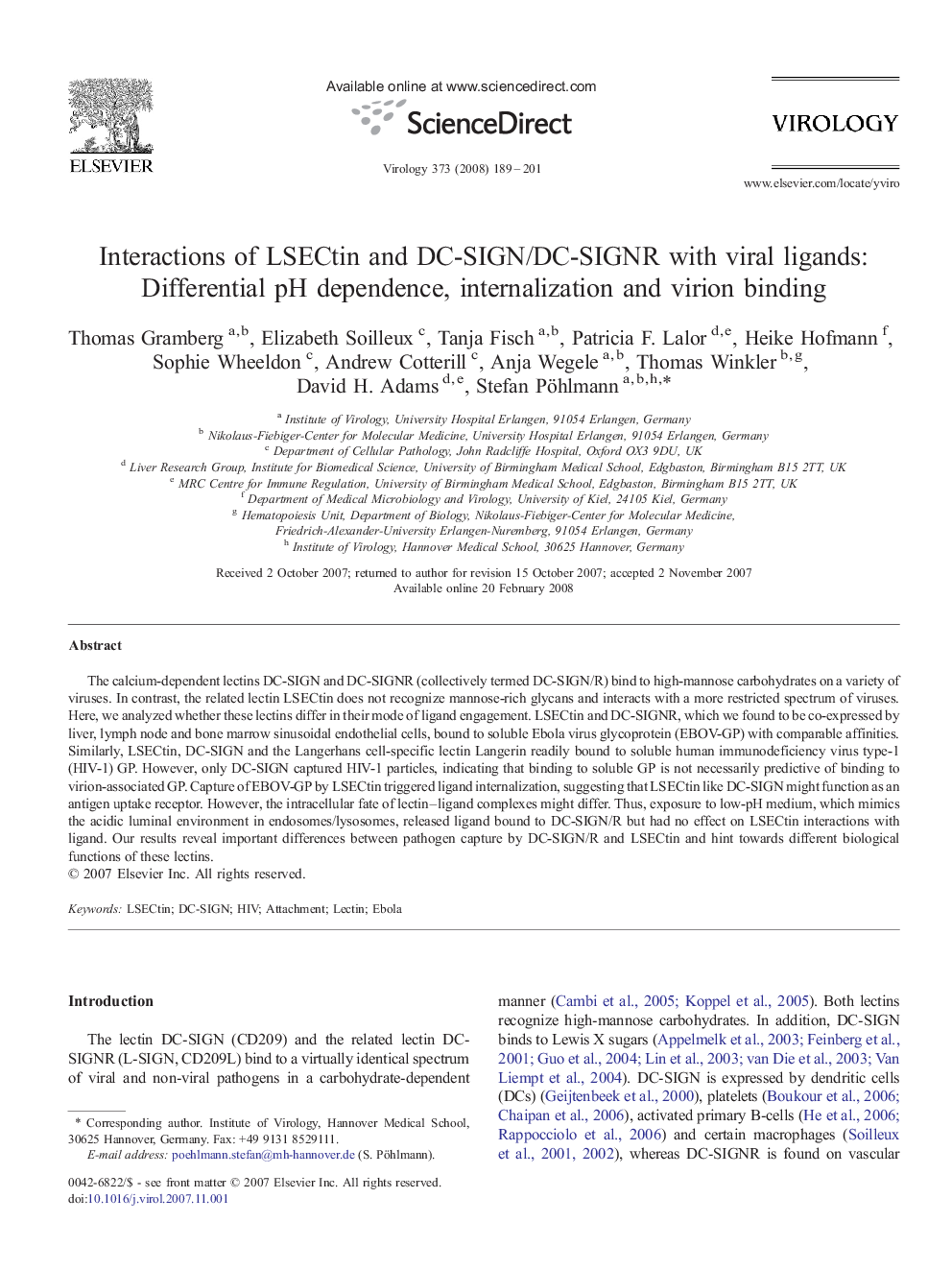| کد مقاله | کد نشریه | سال انتشار | مقاله انگلیسی | نسخه تمام متن |
|---|---|---|---|---|
| 3426416 | 1227329 | 2008 | 13 صفحه PDF | دانلود رایگان |

The calcium-dependent lectins DC-SIGN and DC-SIGNR (collectively termed DC-SIGN/R) bind to high-mannose carbohydrates on a variety of viruses. In contrast, the related lectin LSECtin does not recognize mannose-rich glycans and interacts with a more restricted spectrum of viruses. Here, we analyzed whether these lectins differ in their mode of ligand engagement. LSECtin and DC-SIGNR, which we found to be co-expressed by liver, lymph node and bone marrow sinusoidal endothelial cells, bound to soluble Ebola virus glycoprotein (EBOV-GP) with comparable affinities. Similarly, LSECtin, DC-SIGN and the Langerhans cell-specific lectin Langerin readily bound to soluble human immunodeficiency virus type-1 (HIV-1) GP. However, only DC-SIGN captured HIV-1 particles, indicating that binding to soluble GP is not necessarily predictive of binding to virion-associated GP. Capture of EBOV-GP by LSECtin triggered ligand internalization, suggesting that LSECtin like DC-SIGN might function as an antigen uptake receptor. However, the intracellular fate of lectin–ligand complexes might differ. Thus, exposure to low-pH medium, which mimics the acidic luminal environment in endosomes/lysosomes, released ligand bound to DC-SIGN/R but had no effect on LSECtin interactions with ligand. Our results reveal important differences between pathogen capture by DC-SIGN/R and LSECtin and hint towards different biological functions of these lectins.
Journal: Virology - Volume 373, Issue 1, 30 March 2008, Pages 189–201